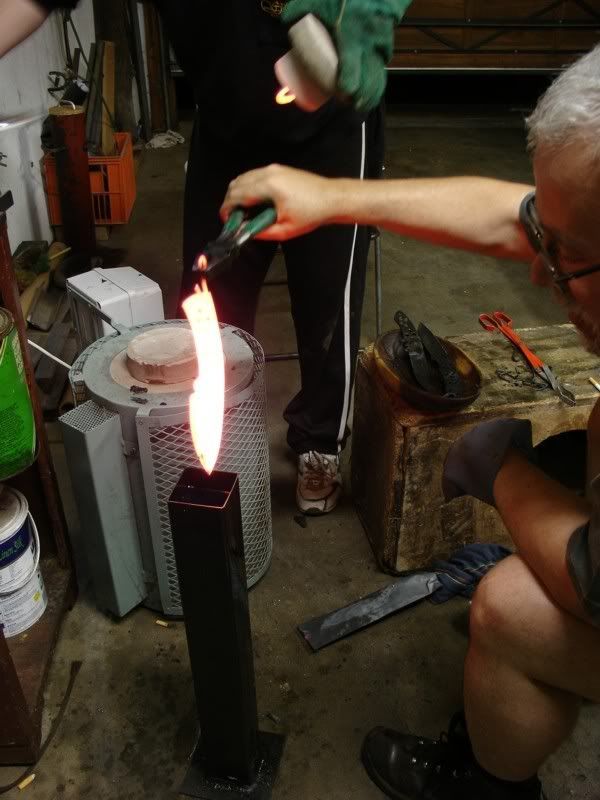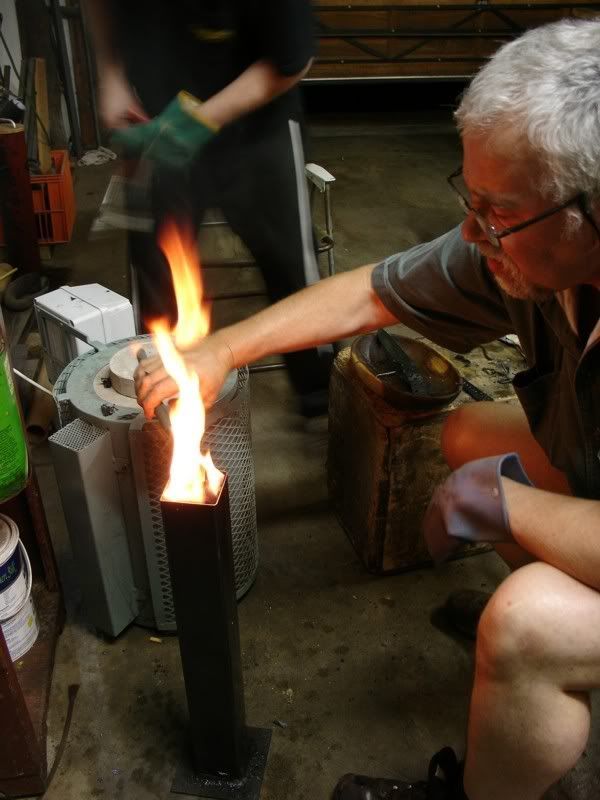This is what the knives looked like last Thursday night.
The knives are heated to 1080C and then quenched in special oil at 70C to harden them to 66RC. Then they are cryogenically frozen for more than 12 hrs and then tempered 3 times at 200C for an hour to give them flex and memory. These knives will flex to just over and angle of 30deg. :thumbsup:

The knives are heated to 1080C and then quenched in special oil at 70C to harden them to 66RC. Then they are cryogenically frozen for more than 12 hrs and then tempered 3 times at 200C for an hour to give them flex and memory. These knives will flex to just over and angle of 30deg. :thumbsup:






